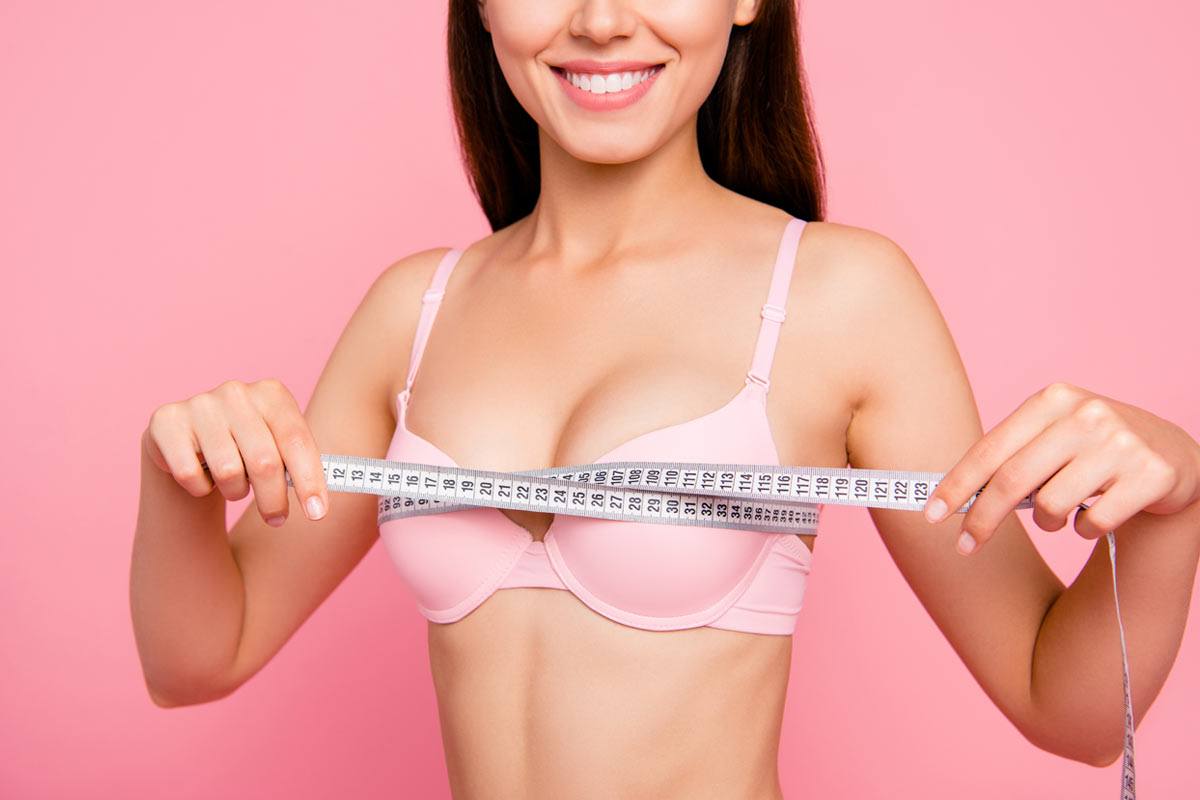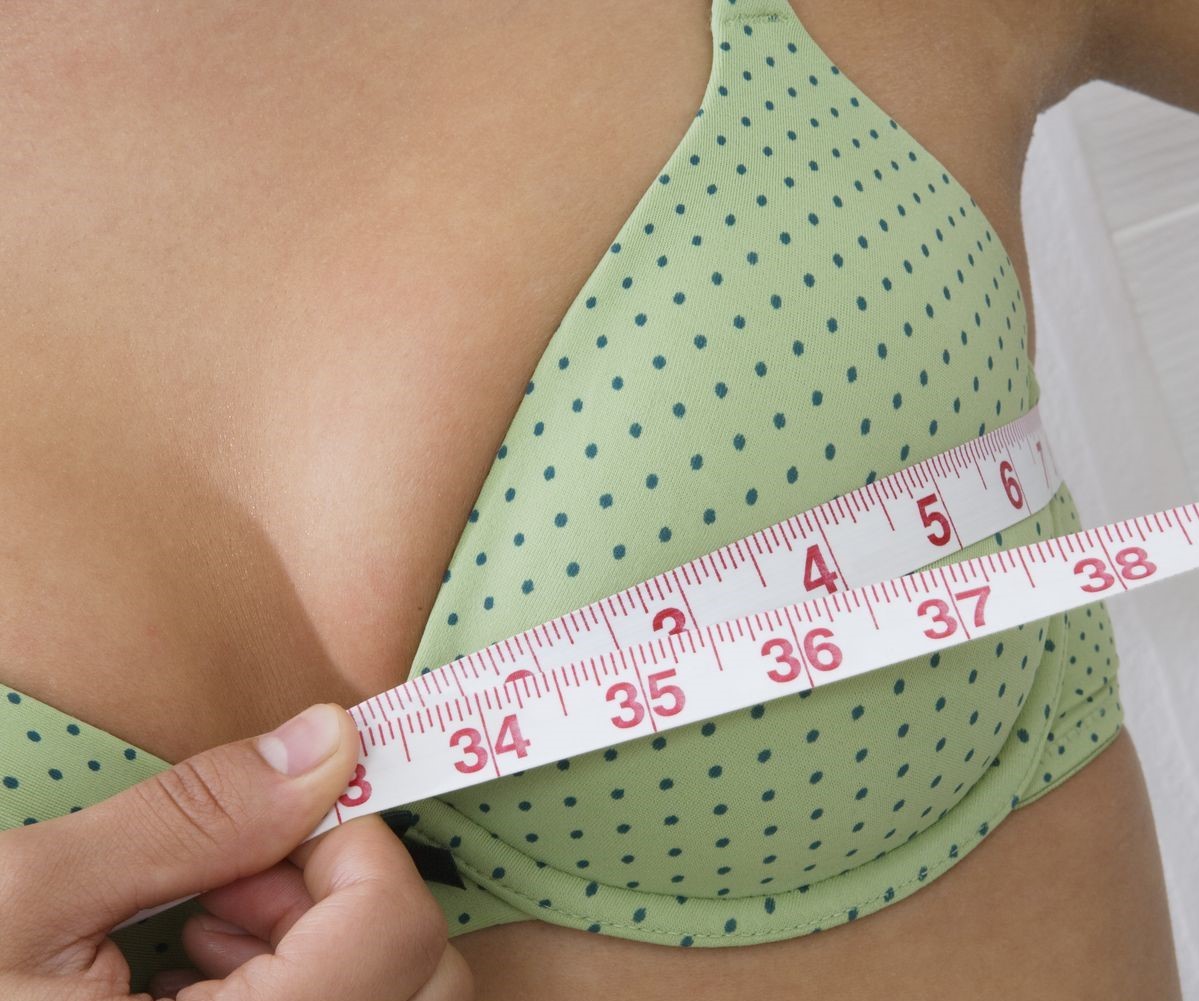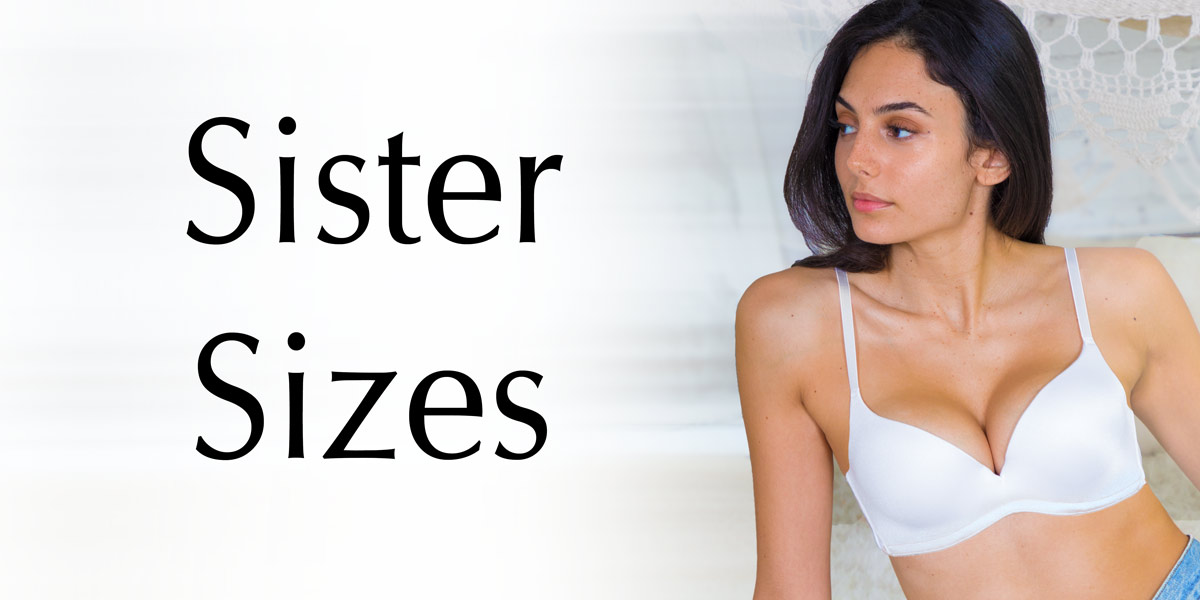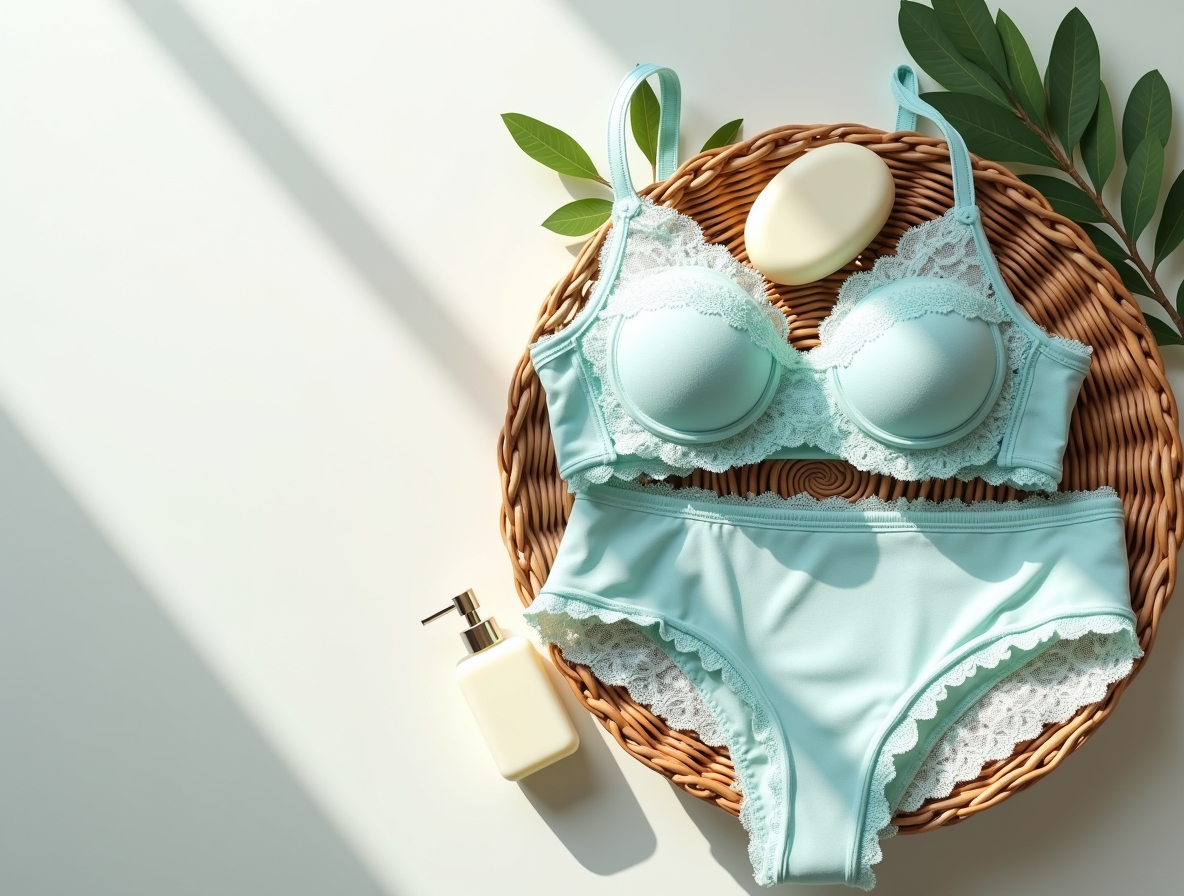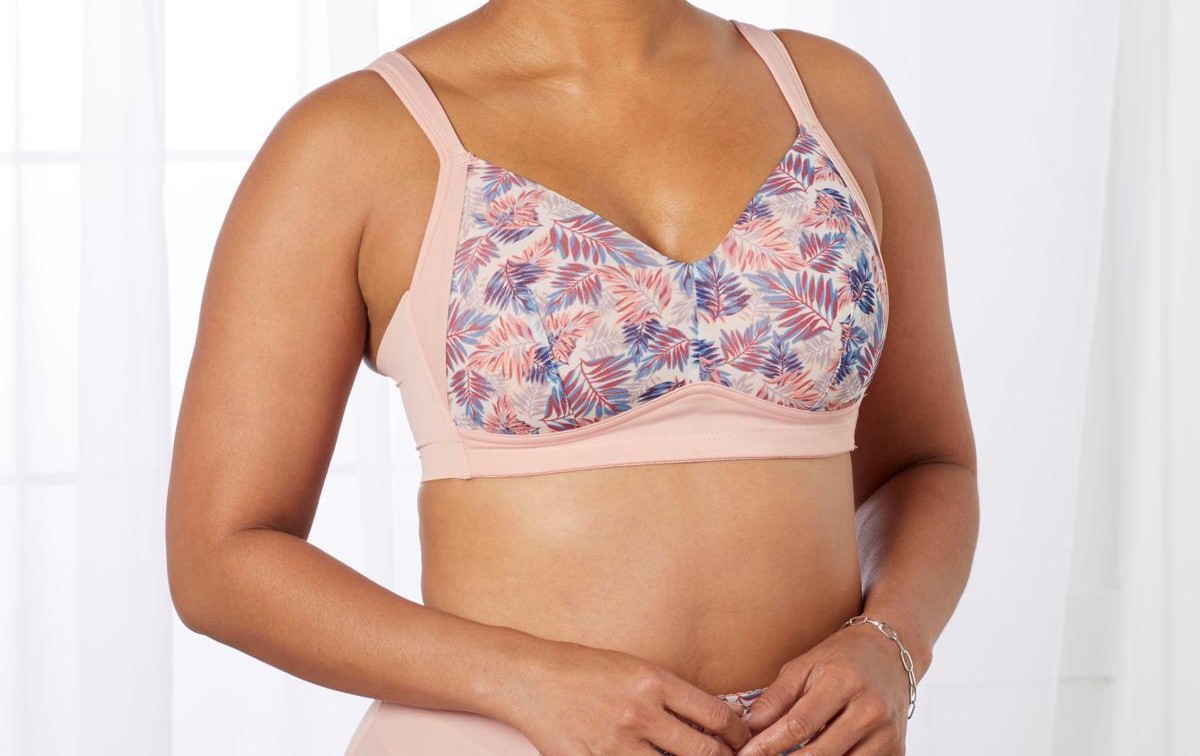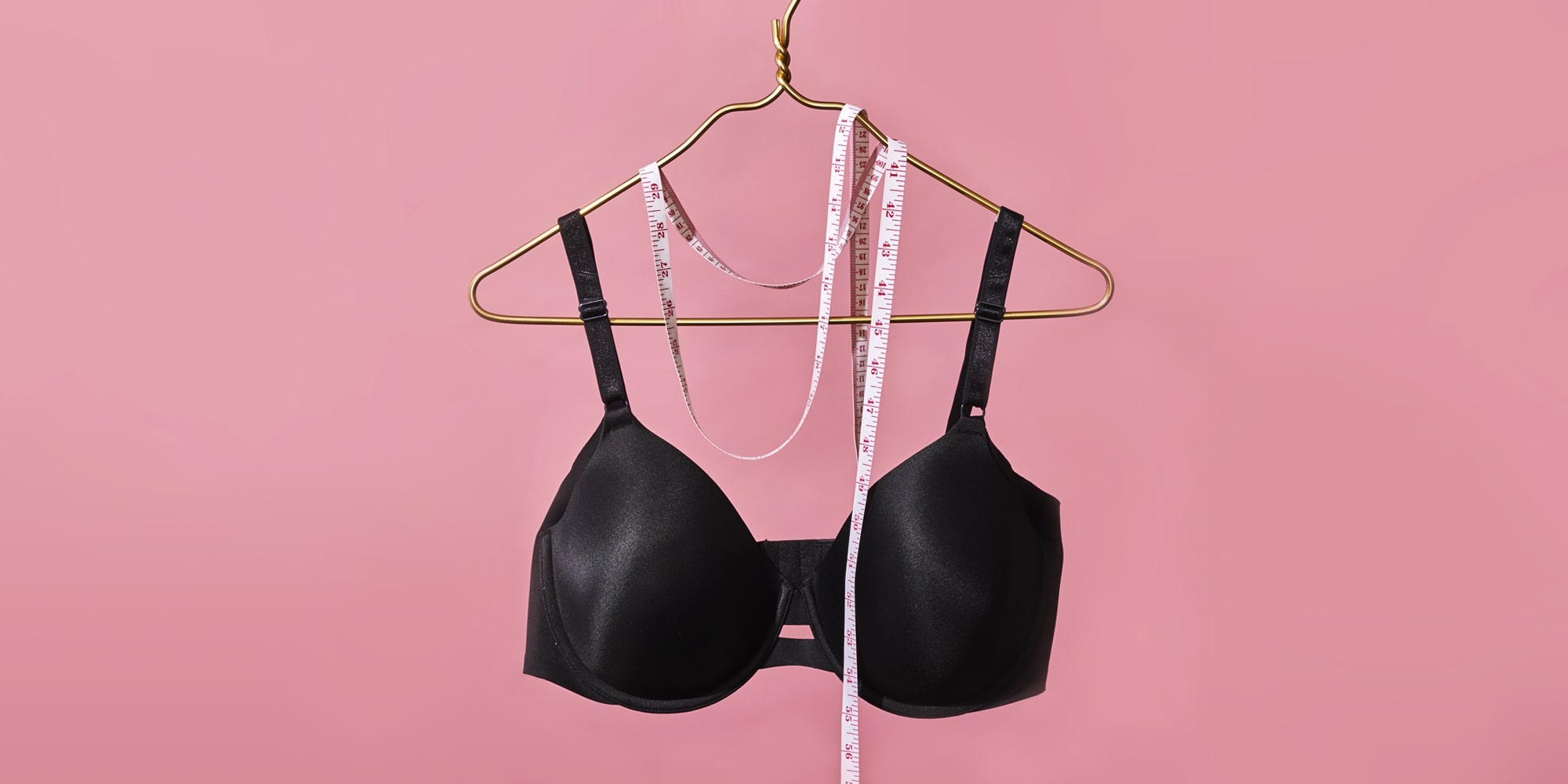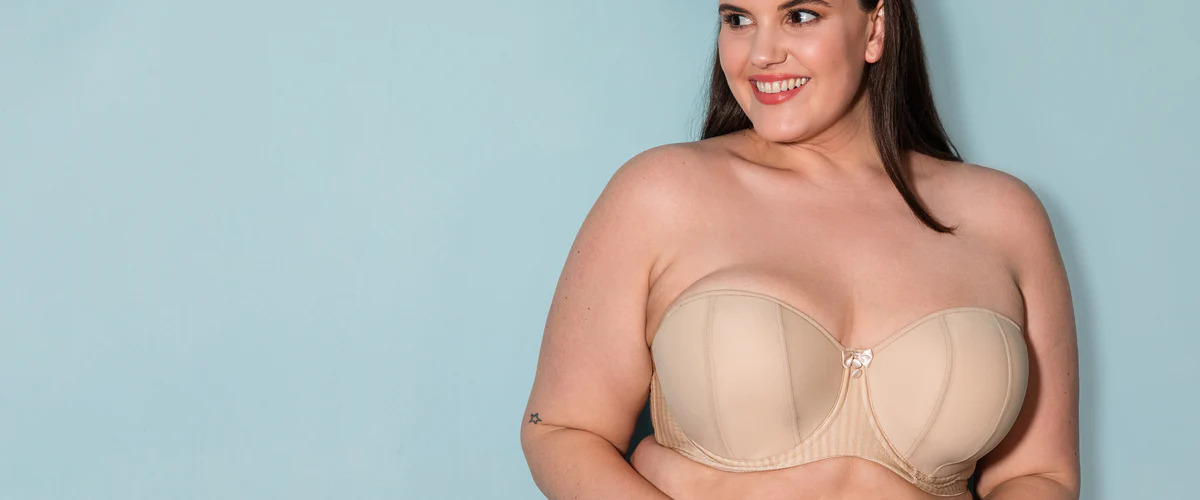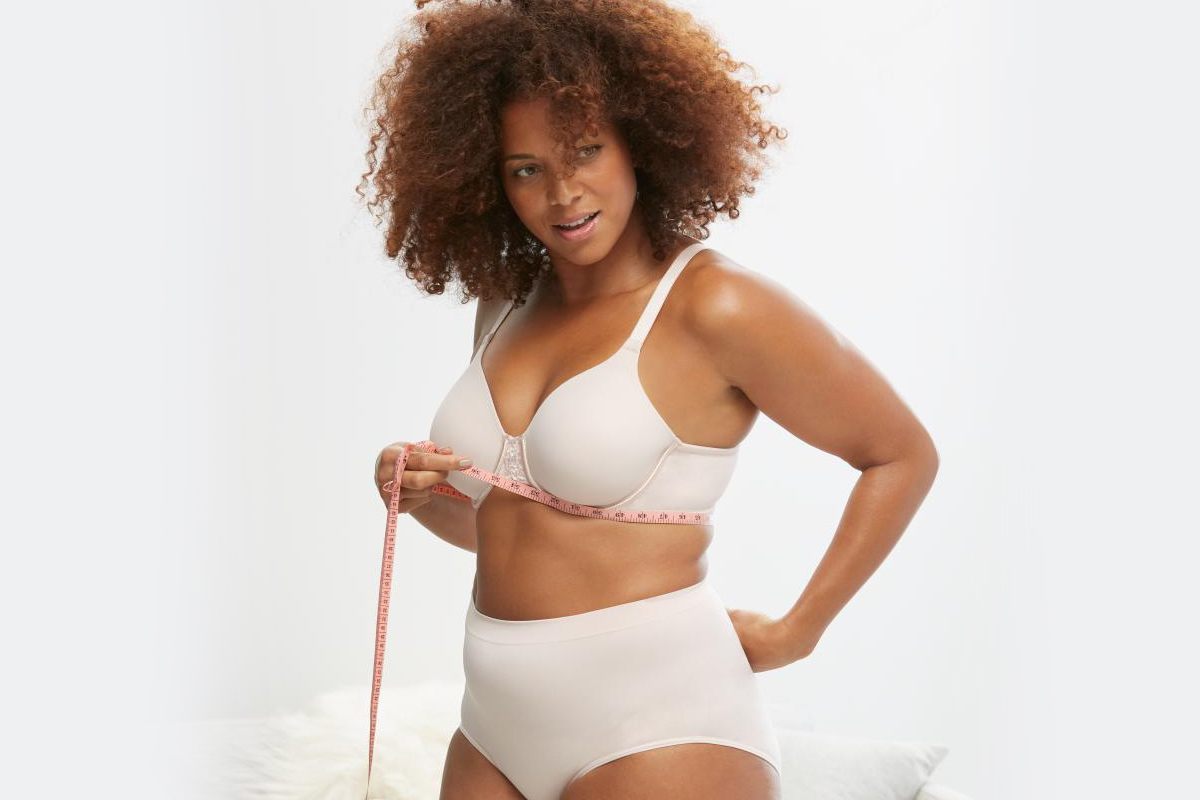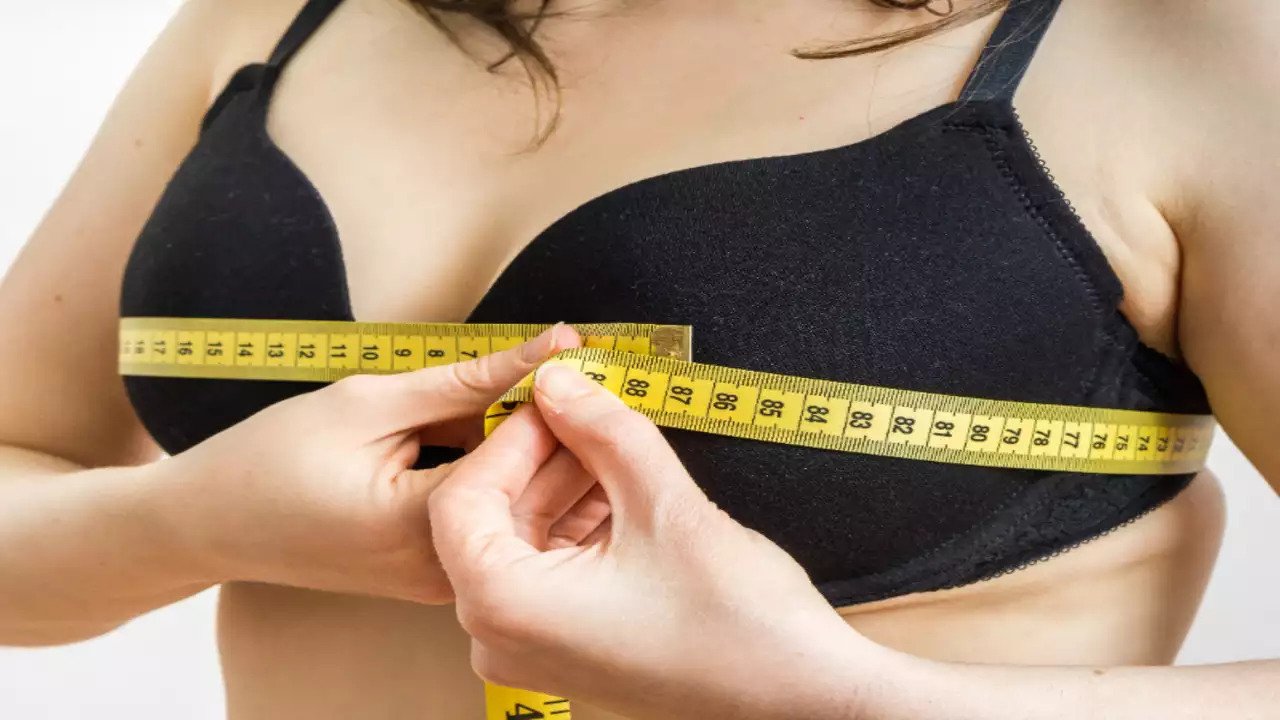Home>How-to Guides>For Women>How To Calculate Cup Size Bra
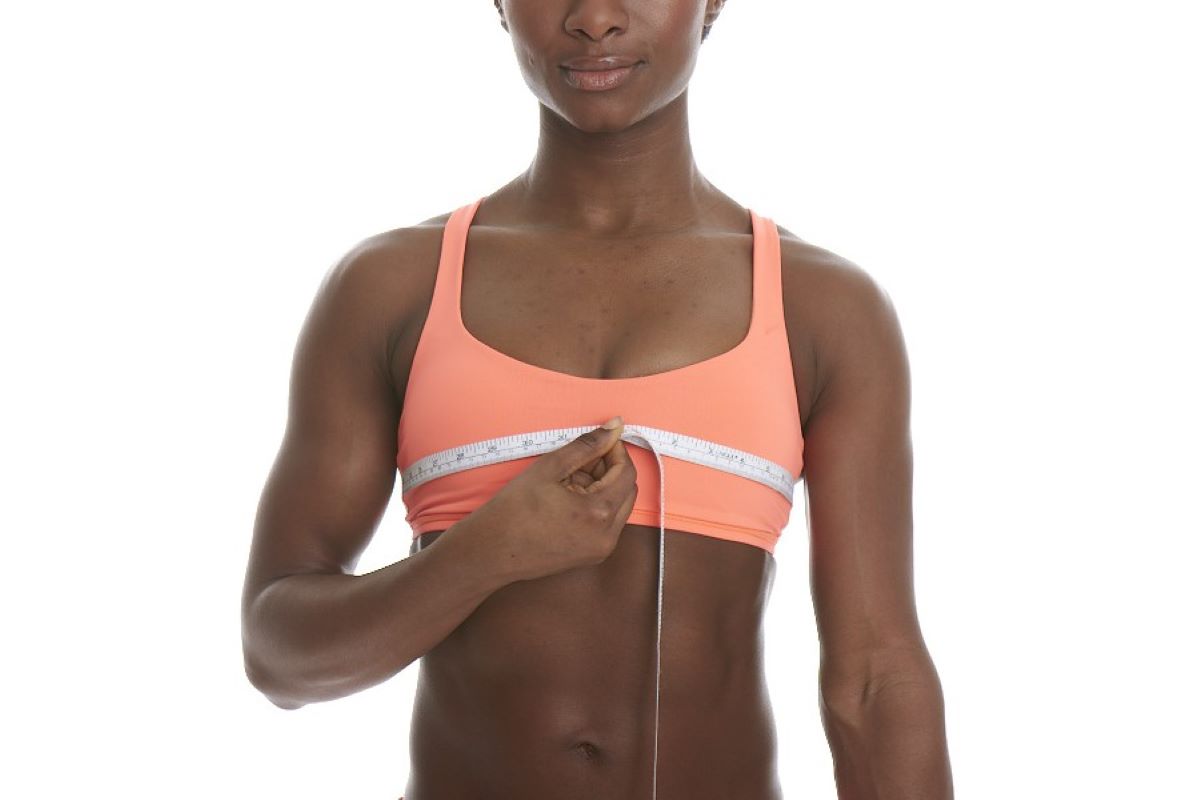

For Women
How To Calculate Cup Size Bra
Modified: September 23, 2023
Learn how to calculate your cup size bra. A comprehensive guide for women to ensure a perfect fit.
(Many of the links in this article redirect to a specific reviewed product. Your purchase of these products through affiliate links helps to generate commission for Under-tec.com, at no extra cost. Learn more)
Table of Contents
Introduction
Welcome to the world of bra shopping! Finding the perfect bra that fits well and offers the right support can make a world of difference for every woman. One key aspect of bra fitting is understanding your cup size. However, determining your cup size can be a bit confusing if you’re unsure about the process. In this article, we will guide you through calculating your cup size and provide you with tips to ensure accurate measurements.
Knowing your cup size is essential because it determines the volume of your breasts in relation to your band size. When shopping for a bra, the combination of band size and cup size ensures optimal comfort and support. Unfortunately, many women wear ill-fitting bras and are unaware of their true cup size, leading to discomfort and inadequate support.
By learning how to calculate your cup size accurately, you can confidently select bras that complement your body and provide the support you need. Whether you’re shopping in a physical store or online, understanding how to determine your cup size will empower you to make informed decisions and find the perfect fit.
Before we delve into the process of calculating cup sizes, it’s important to note that every body is unique, and finding the perfect fitting bra may take some trial and error. However, armed with the right knowledge and techniques, you’ll be well-equipped to start your bra-fitting journey.
In the following sections, we will explore the step-by-step process of measuring your band size and calculating your cup size. We’ll also discuss common mistakes to avoid and factors that can affect the accuracy of cup size measurements. So, let’s get started and help you get one step closer to finding the perfect bra that fits like a dream!
Understanding Bra Cup Size
When it comes to bras, the cup size refers to the volume or size of the breasts. It is denoted by letters such as A, B, C, and so on. The cup size is determined by the difference between your bust measurement and your band measurement. For example, if your bust measurement is 36 inches and your band measurement is 34 inches, the difference is 2 inches, which would generally correspond to a B cup size.
It’s essential to note that cup size is not an absolute measure of breast size. It is relative to the band size. For instance, a D cup on a 34 band size will have a different volume than a D cup on a 38 band size. This is known as sister sizing, where the cup volume changes as the band size changes, while maintaining the same cup letter.
Understanding the concept of cup size is crucial in finding a bra that fits comfortably and provides adequate support. A larger cup size provides more coverage and support for larger breasts, while a smaller cup size is suitable for smaller breasts. It’s worth noting that cup sizes can vary across different lingerie brands, so it’s essential to try on bras and experiment with different cup sizes to find the best fit.
Bra cup sizes typically start with an A cup, which is the smallest, and progress upwards with each letter. However, there can be variations in bra sizing systems depending on the country or manufacturer. For example, the UK sizing system uses double letters, such as DD, E, F, and so on, while the US system follows a single-letter progression.
Keep in mind that cup size alone does not determine the fit of a bra. Factors like the shape, style, and wire placement also play a significant role in how well a bra fits. Additionally, different bra styles and designs may fit differently even if they have the same cup and band size.
Now that you have a basic understanding of bra cup sizes, let’s move on to measuring your band size and calculating your cup size accurately.
Measuring the Band Size
The band size refers to the measurement around your ribcage, just below your breasts. This measurement determines the numerical portion of your bra size, such as 34, 36, or 38. To measure your band size accurately, follow these simple steps:
- Get a measuring tape: Make sure you have a soft, flexible measuring tape on hand. If you don’t have one, you can also use a piece of string or ribbon and then measure it against a ruler.
- Ensure you’re wearing the right bra: Before measuring, it’s crucial to remove your outer clothing and wear a well-fitting non-padded bra. Wearing the wrong bra can affect the accuracy of your measurements.
- Take the band measurement: Stand in front of a mirror and wrap the measuring tape around your torso, just beneath your breasts. Ensure the tape is parallel to the ground, snug but not too tight, and positioned evenly around your ribcage. Make sure it is neither too loose nor too tight for an accurate measurement.
- Read the measurement: Look in the mirror or ask someone to read the measurement where the two ends of the tape meet. Round the measurement to the nearest whole number to determine your band size.
For example, if your band measurement is 32 inches, your band size is 32. If it’s 36 inches, your band size is 36.
Keep in mind that band sizes commonly range from 28 to 52, but this can vary depending on the brand and country. If you’re having trouble finding your exact band size, it may be worth exploring specialty lingerie stores that offer a wider range of sizes.
Remember, your band size provides the foundation for a well-fitting bra, so it’s essential to measure it accurately. Now that you have your band size, let’s move on to calculating your cup size.
Calculating the Cup Size
Now that you have your band size, it’s time to calculate your cup size. To determine your cup size, you need to measure your bust size, which is the fullest part of your breasts. Follow these steps to calculate your cup size:
- Stand straight and measure: Stand in front of a mirror with your arms relaxed at your sides. Wrap the measuring tape around the fullest part of your breasts, typically across the nipple area. Ensure the tape is parallel to the ground and not too tight or too loose, as it can affect the accuracy of your measurements.
- Read the measurement: Look in the mirror or ask someone to read the measurement where the two ends of the tape meet. Round the measurement to the nearest whole number.
- Calculate the difference: Subtract your band measurement (denoted by your band size) from your bust measurement. The difference between the two measurements will determine your cup size.
For example, if your bust measurement is 36 inches and your band measurement (band size) is 34 inches, the difference is 2 inches.
Refer to a bra size chart to find the corresponding cup size based on the difference between your band and bust measurements. In most sizing systems, each inch of difference corresponds to a different cup size. For instance, in the US sizing system, 1 inch difference typically corresponds to an A cup, 2 inches to a B cup, 3 inches to a C cup, and so on.
Using our previous example, with a 2-inch difference between your band and bust measurements, you would typically be a B cup. However, it’s important to remember that sizing can vary across brands and countries. So, it’s always advisable to try on bras and experiment with different cup sizes to find the best fit for your unique shape and preferences.
Now that you have calculated your cup size, you’re one step closer to finding the perfect fitting bra. In the next section, we will discuss techniques for accurate cup size calculations to ensure the best fit possible.
Techniques for Accurate Cup Size Calculation
Accurately calculating your cup size is crucial for finding a bra that fits well and provides the desired support. To ensure precision in your cup size calculation, consider the following techniques:
- Use a soft measuring tape: Using a soft, flexible measuring tape will ensure accurate measurements. Avoid using rigid rulers or tapes that can distort the measurements.
- Take multiple measurements: Measure your band size and bust size at least twice to ensure consistency. If there are discrepancies between the measurements, take a third measurement for confirmation.
- Measure wearing the right bra: Always measure your bust size while wearing a non-padded or lightly padded bra. Wearing a heavily padded bra can alter the measurements and lead to an inaccurate cup size calculation.
- Consider the bra style: Different bra styles can affect the cup size calculation. For example, push-up bras may increase your cup size due to padding, while sports bras may compress the bust and have a different cup size measurement. Take this into account when selecting and measuring for different types of bras.
- Ensure proper bra positioning: When measuring your bust size, ensure the tape is parallel to the ground and positioned across the fullest part of your breasts. Make sure the tape is not too tight or too loose, as this can affect the accuracy of the measurement.
- Consult a bra fitting professional: If you’re uncertain about your measurements or cup size calculation, it can be helpful to visit a bra fitting specialist. They can provide personalized advice, proper measurements, and guide you in finding the perfect fit.
Remember, accurate cup size measurement is essential for a comfortable and supportive bra fit. Taking the time to measure correctly and consider various factors like bra style and positioning will significantly improve your chances of finding bras that flatter your shape and provide optimal support.
Now that you’re equipped with techniques for accurate cup size calculation, let’s discuss how to adjust for different sizing systems and factors that can affect cup size accuracy.
Adjusting for Different Sizing Systems
When it comes to bra sizing, different countries and brands may use different sizing systems, which can cause confusion when determining your cup size. To ensure accurate measurements and a proper fit, it’s important to understand how to adjust for different sizing systems. Here are some tips to help you navigate through different sizing systems:
- Refer to conversion charts: Conversion charts are a valuable tool when transitioning between different sizing systems. These charts provide equivalent cup sizes across different systems, helping you find the right fit. Refer to reliable conversion charts or consult specialized lingerie stores that offer international bra sizes.
- Take note of sister sizing: Sister sizing is the concept of finding equivalent cup sizes on different band sizes. For example, if your usual bra size is 36C, but you find a bra that you love in a different brand using UK sizing, you may need to adjust your band and cup size. In this case, your sister sizes would be 38B (up in the band, down in the cup) and 34D (down in the band, up in the cup).
- Try on different sizes: When shopping for bras from brands using different sizing systems, it’s always advisable to try on different sizes. Don’t rely solely on the numerical and letter sizes – pay attention to how the bra fits your body and whether it provides the desired support and comfort.
- Seek guidance from experts: If you’re unsure about how to adjust for different sizing systems or if you’re facing difficulty finding the right fit, seek guidance from bra fitting experts. They can provide personalized advice and help you navigate through different sizing systems to find the perfect fit.
Remember, every brand may have slight variations in their sizing systems, so don’t be discouraged if you need to experiment with different sizes to find the right fit. The most important thing is to feel comfortable and supported in your bra.
Now that you’re aware of adjusting for different sizing systems, let’s explore some factors that can affect the accuracy of cup size measurements.
Factors Affecting Cup Size Accuracy
While measuring and calculating your cup size, it’s important to be aware of certain factors that can impact the accuracy of your measurements. Understanding these factors will help you take them into account and make adjustments for a more precise cup size calculation. Here are some key factors to consider:
- Breast shape and density: Breast shape and density can affect cup size measurements. Breasts come in various shapes, including full, shallow, east-west, and more. Additionally, breast density can impact how the tape sits against the skin and the overall measurement. It’s essential to recognize that cup size measurement is just one aspect of finding the right fit, and understanding your breast shape and density can further inform your bra shopping choices.
- Weight fluctuation: Changes in weight can significantly alter your band and cup size measurements. If you’ve recently lost or gained weight, it’s advisable to remeasure and reassess your bra size. Weight fluctuations can cause changes in breast tissue and volume, requiring a different cup size for an optimal fit.
- Pregnancy and breastfeeding: Pregnancy and breastfeeding can significantly impact breast size and shape. During pregnancy, breasts tend to increase in size, and after childbirth, they may continue to change due to breastfeeding. It’s important to measure your bra size periodically during and after pregnancy to ensure a comfortable and supportive fit.
- Wearing different styles: Different bra styles and designs may fit differently, even within the same cup and band size. For example, a balconette bra may fit differently than a full-coverage bra of the same size. When trying on bras, experiment with various styles to find the ones that offer the best fit and support for your breasts.
- Genetic factors: Genetic factors can influence breast size and shape. Family history and genetics may contribute to variations in breast size among individuals. This means that even if your measurements suggest a specific cup size, genetic factors can lead to individual differences in how bras fit and feel.
By considering these factors, you can make more informed decisions when calculating your cup size and selecting bras that provide the best possible fit. Remember that bra fitting is not an exact science, and it may take some trial and error to find the perfect fit for your unique body and preferences.
Now that you’re aware of the factors that can affect cup size accuracy, let’s explore some common mistakes to avoid when measuring and calculating your bra size.
Common Mistakes to Avoid
When it comes to measuring and calculating your cup size, there are some common mistakes that can lead to inaccurate results and ill-fitting bras. By being aware of these mistakes and avoiding them, you can improve the accuracy of your cup size calculation. Here are some common mistakes to watch out for:
- Incorrect band measurement: One of the most common mistakes is taking an incorrect band measurement. Make sure the measuring tape is snug but not too tight or too loose around your ribcage. A loose band measurement can lead to an improper fit and lack of support, while a tightly cinched band can be uncomfortable and distort your cup size measurement.
- Measuring over clothing: Always measure your bust size and band size over bare skin or while wearing a non-padded or lightly padded bra. Measuring over clothing can add extra layers and affect the accuracy of your measurements.
- Not considering sister sizing: Sister sizing, as mentioned earlier, refers to finding equivalent cup sizes on different band sizes. If you’re having trouble finding your exact band and cup size combination, consider trying sister sizes to find a more comfortable fit.
- Ignoring breast shape variations: Cup size alone does not account for variations in breast shape and density. It’s important to consider your breast shape, projection, and fullness along with your cup size for a more accurate fit. Remember, different bra styles are designed to accommodate different breast shapes.
- Not reassessing measurements regularly: Your body can change over time due to weight fluctuations, pregnancy, and other factors. It’s crucial to reassess your measurements periodically and update your bra size accordingly. Wearing bras that no longer fit properly can be uncomfortable and affect your posture and overall well-being.
By avoiding these common mistakes, you can improve the accuracy of your cup size calculation and find bras that provide the comfort, support, and confidence you desire.
Now that you’re aware of the common mistakes to avoid, let’s wrap up this article and summarize the key points covered.
Conclusion
Finding a bra that fits well and provides the desired support is essential for every woman. Understanding how to calculate your cup size accurately is a crucial step in this process. By measuring your band size and bust size correctly, considering different sizing systems, and accounting for various factors that can affect cup size accuracy, you can increase your chances of finding the perfect fitting bra.
Remember that cup size is just one aspect of finding the right fit. Factors like breast shape, weight fluctuations, and genetics also play a role in how a bra fits and feels on your body. It’s important to take these factors into account and be open to trying different styles and sizes to find the ones that suit you best.
Furthermore, periodically reassessing your measurements and seeking guidance from bra fitting professionals can help ensure that you’re always wearing the right size and experiencing maximum comfort and support. Don’t be discouraged if it takes some time and experimentation to find the perfect bra – it’s a journey that is unique to each individual.
Armed with the knowledge and techniques outlined in this article, you can approach bra shopping with confidence and make informed decisions to find bras that make you feel comfortable, confident, and supported throughout your day. Embrace your unique body, embrace your size, and enjoy the benefits of a well-fitting bra!
